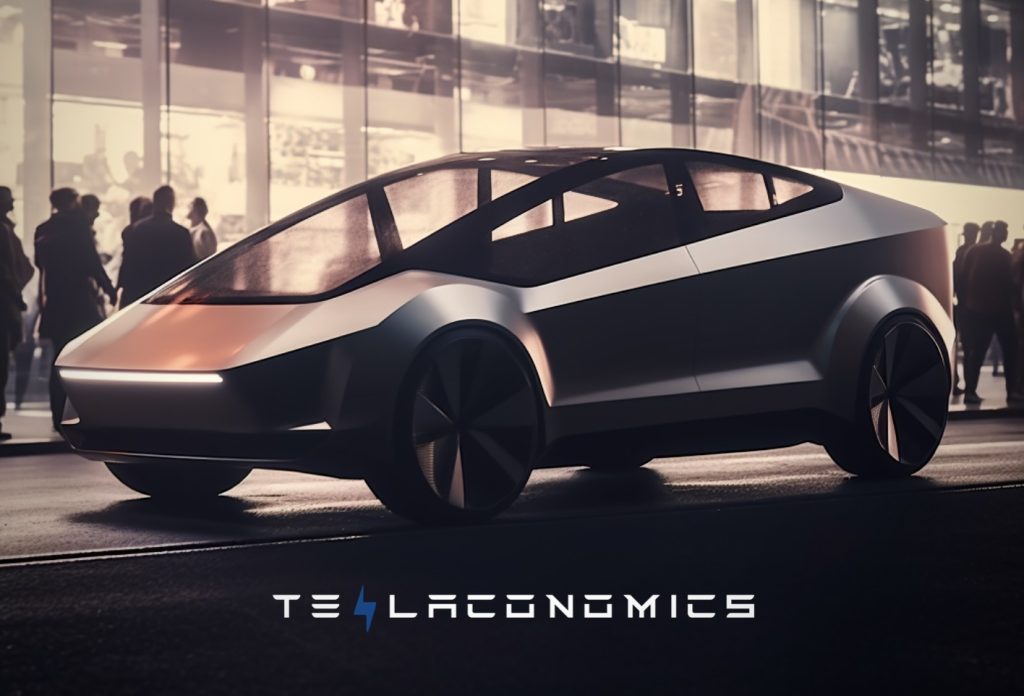Elon Musk's Robotaxi Dream: A Reality Check

Table of Contents
Technological Hurdles Facing Robotaxi Deployment
The technological hurdles to widespread robotaxi deployment are immense. Developing truly autonomous vehicles capable of navigating the unpredictable complexities of real-world driving remains a significant obstacle.
The Complexity of Self-Driving Software
Creating self-driving software that can reliably handle every conceivable scenario is an incredibly complex task. The software must process vast amounts of data from various sensors in real-time, making split-second decisions in unpredictable situations.
- Edge cases: Autonomous vehicles struggle with unusual or unexpected situations, such as a child chasing a ball into the street or a sudden downpour obscuring visibility.
- Sensor limitations: Current sensor technology, while advanced, is not perfect. Limitations in range, accuracy, and the ability to interpret data in challenging conditions (e.g., heavy fog, snow) remain.
- Data processing speed: The sheer volume of data generated by sensors requires incredibly fast processing power to avoid delays that could lead to accidents.
- Handling of uncommon scenarios: Programming a system to account for every possible driving scenario, from minor inconveniences to major emergencies, is a monumental undertaking.
Numerous incidents involving autonomous vehicles highlight these challenges. Accidents involving Tesla's Autopilot, for example, underscore the limitations of current self-driving technology and the need for further refinement.
Hardware Limitations and Costs
The hardware necessary for reliable robotaxi operation – sensors, powerful processors, robust communication systems – presents another significant hurdle.
- LiDAR: Light Detection and Ranging (LiDAR) systems are expensive and require significant power. Their susceptibility to environmental factors also limits their reliability.
- Radar and Cameras: While less expensive than LiDAR, radar and cameras still face challenges in adverse weather conditions and can be susceptible to interference.
- Computational power requirements: Processing the massive amounts of sensor data requires extremely powerful and energy-efficient processors, which are currently expensive and consume significant power.
- Cost of sensor replacement/maintenance: The cost of replacing or maintaining damaged sensors can be substantial, impacting the overall economic viability of robotaxis.
Scaling the production of this advanced hardware to meet a mass-market demand for robotaxis presents a significant manufacturing and logistical challenge.
Regulatory and Legal Challenges for Robotaxis
The legal and regulatory landscape surrounding autonomous vehicles is complex and varies significantly across different jurisdictions. This fragmentation creates significant challenges for companies aiming to deploy robotaxis globally.
Navigating the Complex Legal Landscape
The legal implications of autonomous vehicle accidents, for instance, are still largely unresolved. Determining liability in the event of a collision involving a robotaxi remains a critical legal and ethical question.
- Liability in case of accidents: Determining responsibility in an accident involving a self-driving car – is it the manufacturer, the software developer, or the owner? – is a complex legal issue.
- Insurance requirements: Developing adequate insurance frameworks to cover potential damages caused by robotaxis is another key challenge.
- Data privacy concerns: Autonomous vehicles collect vast amounts of data, raising significant privacy concerns. Robust data protection measures are essential.
- Certification processes: Establishing clear and consistent certification processes for autonomous vehicles is necessary to ensure safety and reliability.
The lack of consistent global standards for robotaxi operations creates further complications for companies operating across multiple jurisdictions.
Public Perception and Acceptance
Public trust and acceptance are crucial for the successful deployment of robotaxis. Addressing public concerns about safety, security, and job displacement is paramount.
- Addressing concerns about safety: Convincing the public that robotaxis are safer than human-driven vehicles requires a significant demonstration of reliability and safety.
- Security concerns: Protecting robotaxis from hacking and malicious attacks is essential to ensure public confidence.
- Job displacement: The potential for robotaxis to displace jobs in the transportation sector needs careful consideration and mitigation strategies.
Public education and communication campaigns play a vital role in building trust and promoting the adoption of robotaxi technology.
Market Competition and Business Viability of Robotaxis
The autonomous vehicle market is intensely competitive, with numerous companies vying for market dominance. This fierce competition significantly impacts the business viability of robotaxi services.
The Intense Competition in the Autonomous Vehicle Market
Companies like Waymo, Cruise, and several others are investing heavily in the development of self-driving technology. The race to achieve market leadership is fierce, requiring significant financial resources and technological breakthroughs.
- Waymo, Cruise, and other major players: These companies are developing advanced self-driving systems and deploying robotaxi services in pilot programs.
- Their strategies and technological advancements: Each company pursues different strategies and technological approaches, creating a dynamic and competitive landscape.
- Financial implications of robotaxi development and deployment: The cost of developing and deploying robotaxi fleets is substantial, requiring significant funding and investment.
Economic Feasibility and Business Models
The economic viability of robotaxi services depends on several crucial factors. Achieving profitability requires careful consideration of operating costs, pricing strategies, and potential revenue streams.
- Cost per mile: Reducing the cost per mile of operating robotaxis is crucial to ensure affordability and profitability.
- Pricing models: Developing effective pricing models that balance affordability with profitability is essential.
- Potential for profitability: The long-term profitability of robotaxi services depends on several factors, including technological advancements, regulatory changes, and market demand.
- Impact on existing transportation systems: The introduction of robotaxis will likely significantly impact existing transportation systems, including public transportation and ride-sharing services.
The potential for robotaxis to become a profitable business venture remains uncertain, depending heavily on technological advancements and market acceptance.
Conclusion: Assessing Elon Musk's Robotaxi Vision
The widespread adoption of robotaxis faces significant technological, regulatory, and market hurdles. While the potential benefits are substantial, the challenges are equally significant. The timeline for realizing Elon Musk's ambitious vision remains uncertain, heavily dependent on overcoming these substantial obstacles. Technological advancements must continue at a rapid pace, while regulatory frameworks must adapt to support the safe and responsible deployment of autonomous vehicles. The intense market competition will further shape the future of robotaxi deployment. We encourage you to continue your research into autonomous vehicle technology, self-driving cars, and robotaxi deployment to form your own informed opinion about the future of this transformative technology.

Featured Posts
-
 Community Support Through Cuts Jay Barbershops Suicide Prevention Event
Apr 25, 2025
Community Support Through Cuts Jay Barbershops Suicide Prevention Event
Apr 25, 2025 -
 Stagecoach 2025 A Preview Of The Country Pop And Desert Nights Lineup
Apr 25, 2025
Stagecoach 2025 A Preview Of The Country Pop And Desert Nights Lineup
Apr 25, 2025 -
 Your 90s Memories Featured In Our Gallery
Apr 25, 2025
Your 90s Memories Featured In Our Gallery
Apr 25, 2025 -
 Un Acteur De Stranger Things Dans La Suite Du Film Fantastique A 571 Millions De Dollars
Apr 25, 2025
Un Acteur De Stranger Things Dans La Suite Du Film Fantastique A 571 Millions De Dollars
Apr 25, 2025 -
 Bill Maher Interview Newsom Discusses Democratic Party Toxicity And Podcast Plans
Apr 25, 2025
Bill Maher Interview Newsom Discusses Democratic Party Toxicity And Podcast Plans
Apr 25, 2025
